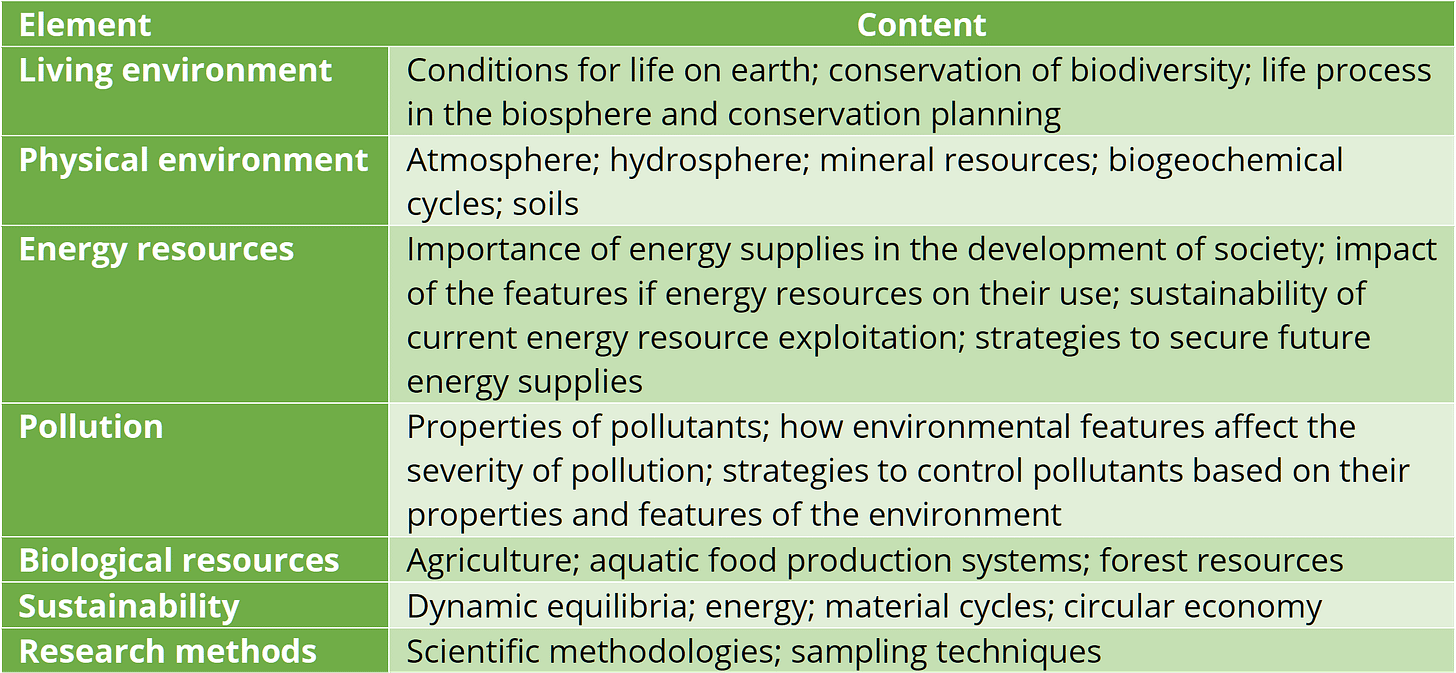Tending the Green Shoots
Looking at climate change, net zero and sustainability in the school curriculum
At COP26, Education Secretary Nadhim Zahawi told us that teachers will be supported to deliver world-leading climate change education through a model science curriculum, which will be in place by 2023. Following this up in November 2021, the Department for Education’s (DfE) draft strategy for Sustainability and Climate Change describes a strategic aim – in England, at least – for “Excellence in education and skills for a changing world: preparing all young people for a world impacted by climate change through learning and practical experience”.
In DfE’s draft strategy, we see this five-pronged approach:
Source: BMI from DfE Draft Strategy for Sustainability & Climate Change (Action Areas and Outcomes only)
The Green Edge has been examining this a little further.
Spotting the gaps
Looking across KS1-KS4 we only see a limited number of ‘mentions’ of climate change1 - all of which occur within biology, chemistry, geography, and science. By far the richest source of assessed curriculum for climate change is the Environmental Science A Level, which provides a framework, detailed content, and practical skills development opportunities. We suggest this A Level could be usefully drawn upon to inform and shape the curriculum for Years 7-11.
A Level Environmental Science (source: BMI)
So, the Department for Education has a lot to build on. But we see gaps. Generally, we see no mention of covering climate change within Food Technology (low carbon foods), English (communicating climate change risk), Business Studies (risks associated with extreme weather), History (how climate change was recognised), Politics (different responses to climate change across the world, and its impact on equity and social justice). We should also remember that many students entering Year 10 must choose between Geography and History at GCSE.
Gazing into space
Is there space within the current curriculum and timetable?
A normal school year involves 1650 hours of taught curriculum. Of this, 300 - 350 hours are allocated to science in Years 10 and 11, which is the target subject in which climate change will be covered. How many of these hours will be devoted to climate change? Perhaps 10%, if we look at other countries like Italy – although there it’s covered in geography, maths and physics, not just science.
So, perhaps 60 hours or so over the course of two years on the most existentially important subject there’s ever been. Is this enough?
Where we see the greatest variety of approaches to teaching climate change in schools is in the huge range of third parties providing extended curriculum opportunities. Here are some examples:
Source: BMI
Are the DfE proposals enough?
We see plenty of resources available, of many different types and formats. But will teachers be ready to deliver the proposed model science curriculum? For teachers to be able to deliver new materials from the start of the school year in 2023, materials will have to be available early in 2023 for them to be integrated into the curriculum. Practical projects, course work, visits and so on will all need to be planned and set up. New equipment and materials may need to be purchased for experiments and projects.
Will schools be given leeway on how they meet their climate change curriculum obligations? For example, could a school run themed days for individual year groups? Could whole-term projects combine formally taught elements with individual learning, teamwork, and projects in the local community? Every variant takes time to prepare and requires expertise to develop and deliver. Given the prominence of the sustainability and climate change strategy at the DfE, Ofsted will show an interest, as will local governing bodies and in particular their curriculum committees. For many, we feel the focus on the science curriculum will be too narrow and will not take on board the fact that climate change affects all aspects of everyday life.
Taking a wider perspective, is simply modifying a part of the science curriculum sufficient? Surely this is a golden opportunity to look at the various sustainability skills maps – the one developed by the Institute of Environmental Management and Assessment (IEMA), for example – and build them into the curriculum. This seems an ideal opportunity to use some of the great resources already out there to equip students for life in the brave net zero world.
As for DfE itself: how will it lock sustainability in to everything it does with the curriculum and the education estate? Sustainability is not a ‘bolt on’ component. It calls for a significant mindshift, to find better ways of working across the divides with other government departments and agencies.
The Green Edge will be watching with great interest.
Would you like to share your knowledge and experience of green skills on The Green Edge? If so, please drop us a line at greenedge@bluemirrorinsights.com.
Also, if you feel you’d like to sponsor us and become part of our Green Edge Advisory Group, please contact us at the same address.
We do note that the word ‘mention’ means different things to different observers. Numbers of mentions in this context vary from 6 (Andrew Charlton Perez of Reading University in Carbon Brief) to 17 (Alan Kinder of the Geographical Association).











Great challenge for education.... Although a single A level exists focusing on these crucial issues, how is this being promoted to schools, and how many teachers and schools are in a position to offer it? Figures for last year show just over a 1000 students taking the A level , with previous 3 years approx 800 per annum. How many of those are inspired to go on to become our net zero heroes of the future? We need to be getting so many more signing up to this starting point, the challenge is how?